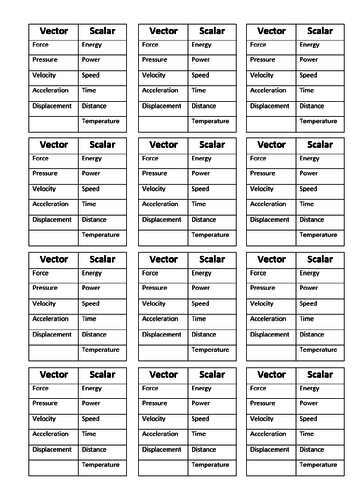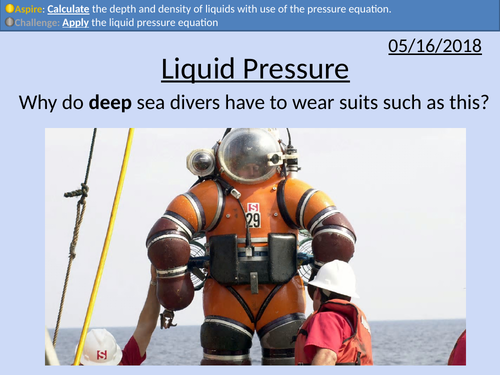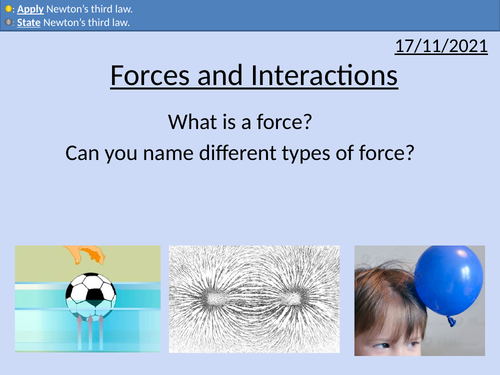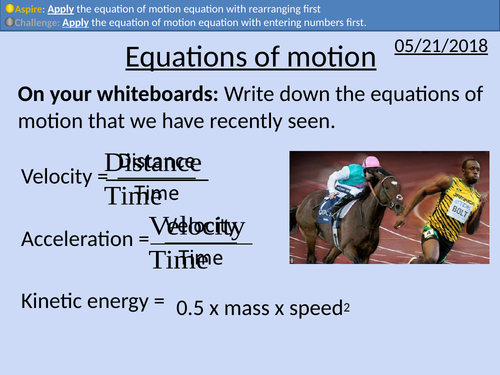496Uploads
163k+Views
70k+Downloads
Physics

OCR AS Physics: Kirchhoff's 1st and 2nd Law
OCR AS level Physics: Kirchhoff’s Laws and circuit diagrams is a part of the Module 4: Electrons, Waves, and Photons. PowerPoint with worked examples and homework.
Definitions of Kirchhoff’s 1st and 2nd Law
Applying Kirchhoff’s 2nd Law
Drawing circuit diagrams for parallel and series circuits

OCR AS Physics: Diffraction and Polarisation
OCR AS Physics: Diffraction and Polarisation is a part of the Module 4: Electrons, Waves, and Photons. PowerPoint with worked examples and homework.

OCR AS Physics: Electromagnetic Waves
OCR AS Physics A: Electromagnetic Waves is a part of the Module 4: Electrons, Waves, and Photons. PowerPoint with worked examples and homework.

GCSE Physics: Electrostatics
This presentation covers OCR Gateway Physics 9-1 P3.1.1 Electrostatics
Subatomic particles and electric charge
Transfer of electric charge
Attraction and repulsion from electric charge
Electric field lines
Interaction of electric field lines
Van der Graff generator

GCSE Physics: Simple Circuits
This presentation covers OCR Gateway Physics 9-1 P3.2.1 Simple Circuits.
Circuit Symbols
Electric field lines and potential difference
Modeling Circuits with Rope
Measuring Potential Difference
Energy Transferred Equation for Electricity
Rearranging Equations

GCSE Physics: LDRs and Thermistors
This presentation covers OCR Gateway Physics 9-1 P3.2.5 LDR and Thermistors.
Circuit Symbols
Uses of LDRs and Thermistors
Plotting data and characteristic curves
Conductors, insulators, and semiconductors
Experiment into resistance and temperature of a thermistors
Investigation into resistance and light level of a LDR

GCSE Physics: Graphs of Current and Potential Difference (I-V)
This presentation covers OCR Gateway Physics 9-1 P3.2.4 Graphs of potential difference (p.d.) and current.
Linear circuit element
Non-linear circuit element
Diodes and Light emitting diode (LED)
Current against potential difference graphs
How the gradient of a current against potential difference graph relates to resistance
Experimental set-up for determining circuit elements
How temperature affects resistance in lamps and metal conductors (wires)

GCSE Physics: Current and Magnetic Fields
This presentation covers OCR Gateway Physics 9-1 P4.1.2 Current and Magnetic Fields.
Current Produces Magnetic Fields
Experiment to Demonstrate Magnetic Field Lines
Right-hand Corkscrew Explanation
Solenoids
MRI imaging

GCSE Physics: Magnets and Magnetic Fields
This presentation covers OCR Gateway Physics 9-1 P4.1.1 Magnets and Magnetic Fields.
Rules for repulsion and attraction
Magnetic Field Line Rules
Magnetic field density and magnetic force
Modeling the Earth as a Bar Magnet
Permanent and Induced Magnets
Magnetic Domains

GCSE Physics: Current and Forces with Equation
This presentation covers OCR Gateway Physics 9-1 P4.2.1 b Current and Forces.
Units for Magnetic Field Strength
Converting from mT to T
Magnetic Force Equation
Rearranging Equations
Increasing the force on a current carrying conductor in an external magnetic field.
Student questions and worked answers

GCSE Physics: Vectors and Scalars
This presentation covers OCR Gateway Physics 9-1 P1.2.2.
Content covered:
Definition for vector and scalar
Vector addition in 1 D
Vector addition in 2 D
Scaled drawings and Pythagoras’ theorem
Worked examples and student problems with answers included

GCSE Physics: Liquid Pressure
This presentation covers OCR Gateway Physics 9-1 P1.3.4 Liquid Pressure
This presentation includes:
Liquid pressure equation
Worked solutions
Exam style questions with answers
Rearranging equations
Incompressibility of liquids.

GCSE Physics: Forces and Interactions
This presentation covers OCR Gateway Physics 9-1 P2.2.1
Newton’s third law
Contact and non-contact forces
Exam style question with solution

GCSE Physics: Work Done and Power
This presentation covers OCR Gateway Physics 9-1 P2.2.7
Work done equation
Rearranging work done equation
Questions and answers for work done
Power equation and definition
Rearranging power equation
Different units for work done: J, N m, kg m^2/s^2

GCSE Physics: Stretching Springs
These two lesson presentations covers the OCR Gateway Physics 9-1 P2.3.1 material.
• Number of forces needed to deform an object
• Elastic and Plastic definitions
• Hooke’s Law
• Rearranging equations
• Determining the gradient
• Determining the spring constant
• Experimental procedure
• Exam style questions with solutions

GCSE Physics: Moments and Turning Forces
This presentation covers OCR Gateway Physics 9-1 P2.3.4 Turning Forces
Clockwise and anti-clockwise moments
Equation for moments
Rearranging equation
Balancing moments
Principle of moments

GCSE Physics: Equations of Motion
This presentation covers GCSE Physics OCR Gateway P2.1.6
Introduction of final speed^2 – initial speed^2 = 2 x acceleration x distance
Rearranging of final speed^2 – initial speed^2 = 2 x acceleration x distance
Derivation of final speed^2 – initial speed^2 = 2 x acceleration x distance
Three different methods for rearranging equations
Kinetic energy, acceleration and speed problems with answers

GCSE Physics: Wave Properties
This presentation covers OCR Gateway Physics 9-1 P5.1.1b Waves and their properties. Includes student activities and full worked answers.
Amplitude
Wavelength
Frequency
Time period
Calculating frequency and equation
Relationship between frequency and wavelength when speed is constant.
Calculating time period from frequency with equations
Bundle

GCSE OCR Physics: P2.1 Motion
All resources for P2.1 GCSE OCR Physics Gateway 9-1.Triple and combined (Higher and Foundation) is covered in this material.
Includes:
Distance, time and speed
Vectors and Scalars
Acceleration
Distance-time graphs
Velocity-time graphs
Equations of motion
Kinetic Energy

OCR A level Physics A: Temperature
OCR A level Physics A: Temperature powerpoint with homework and answers




















